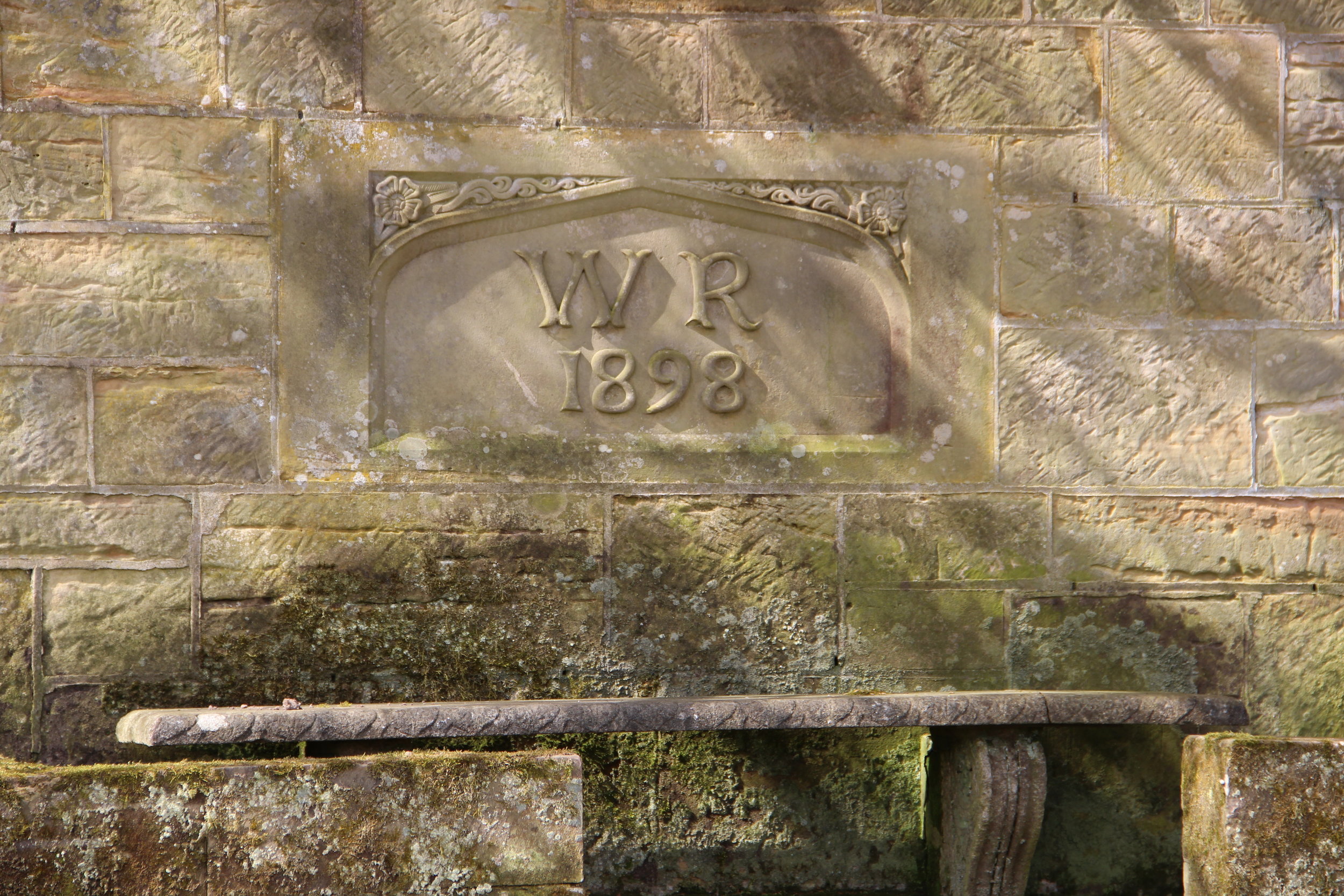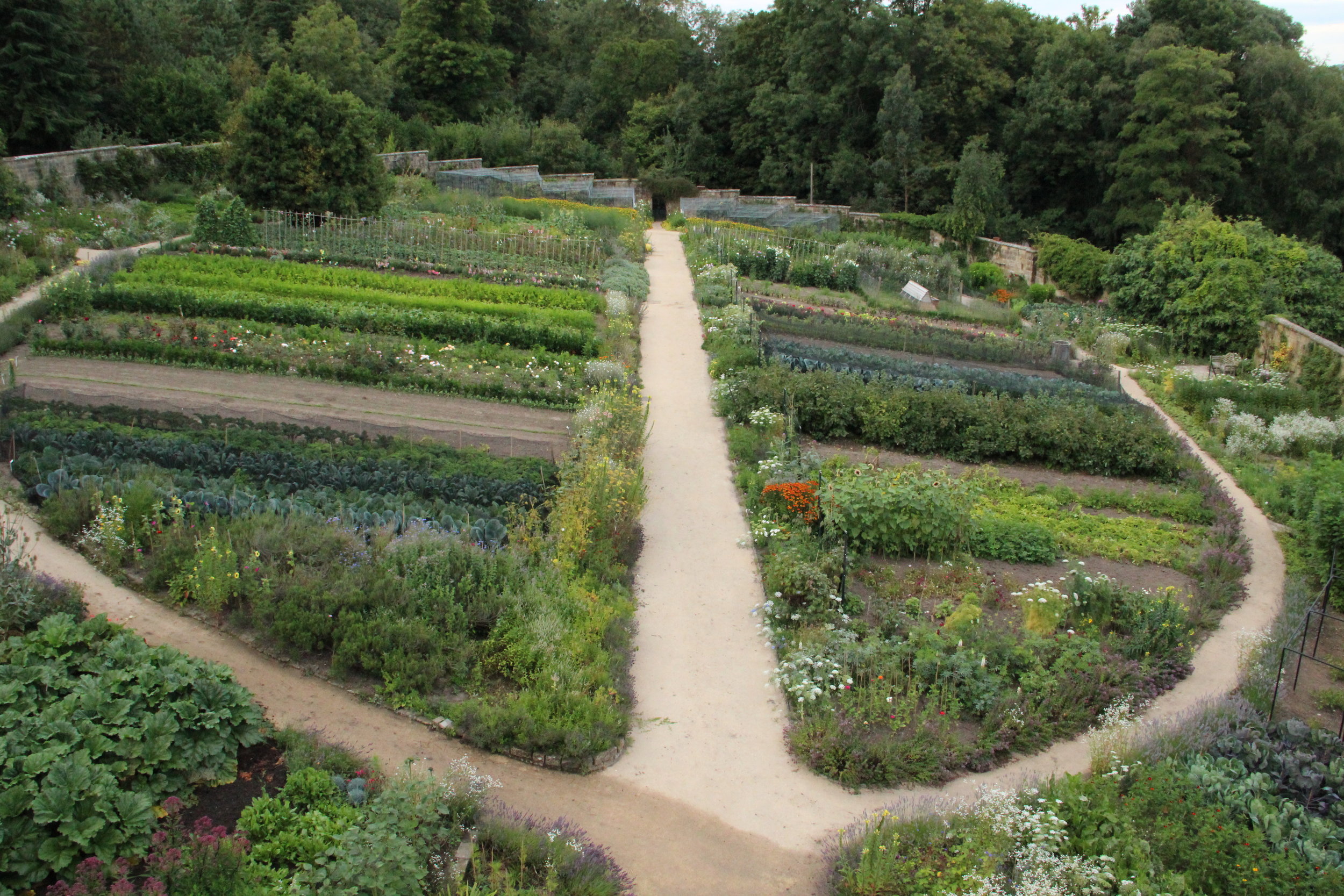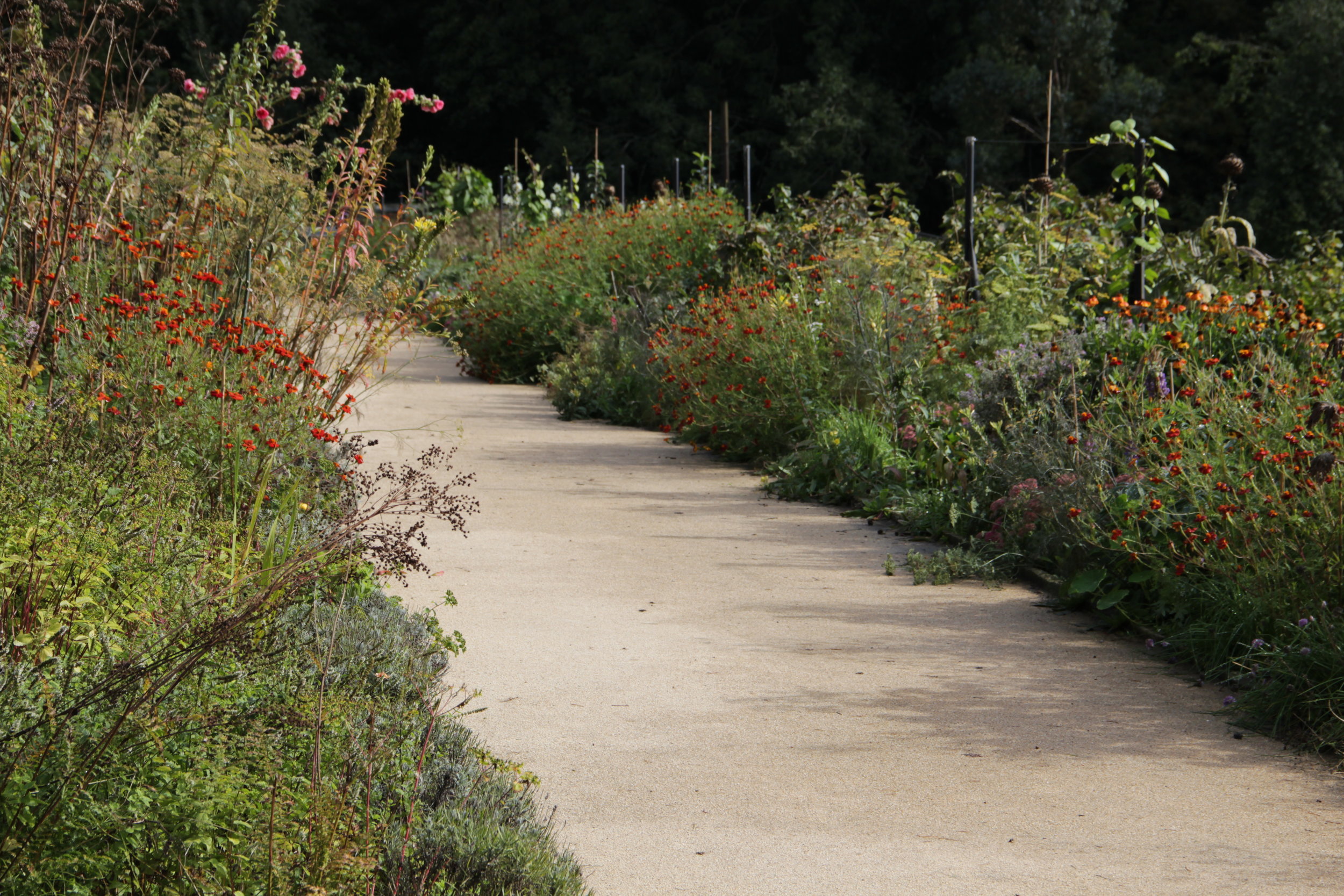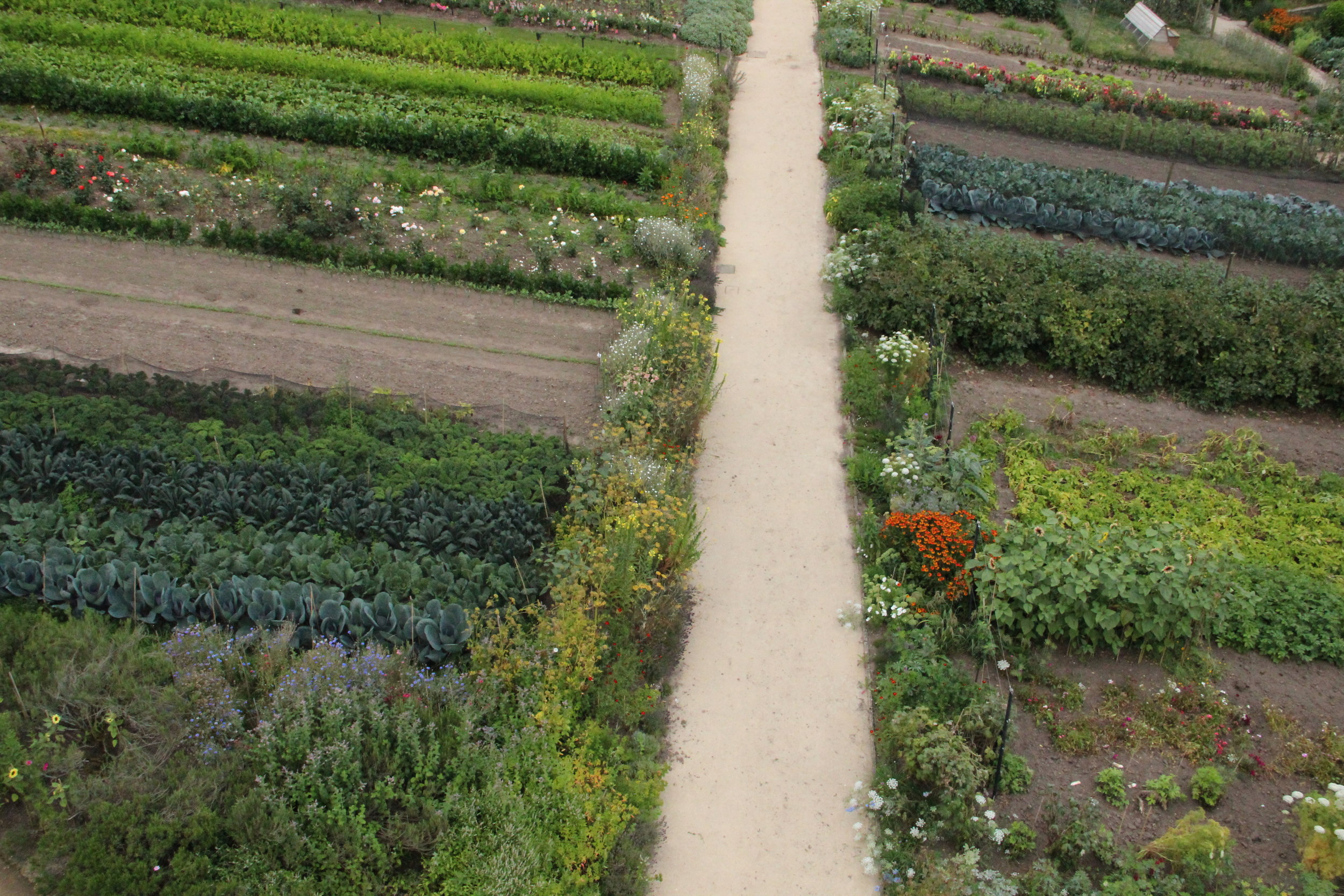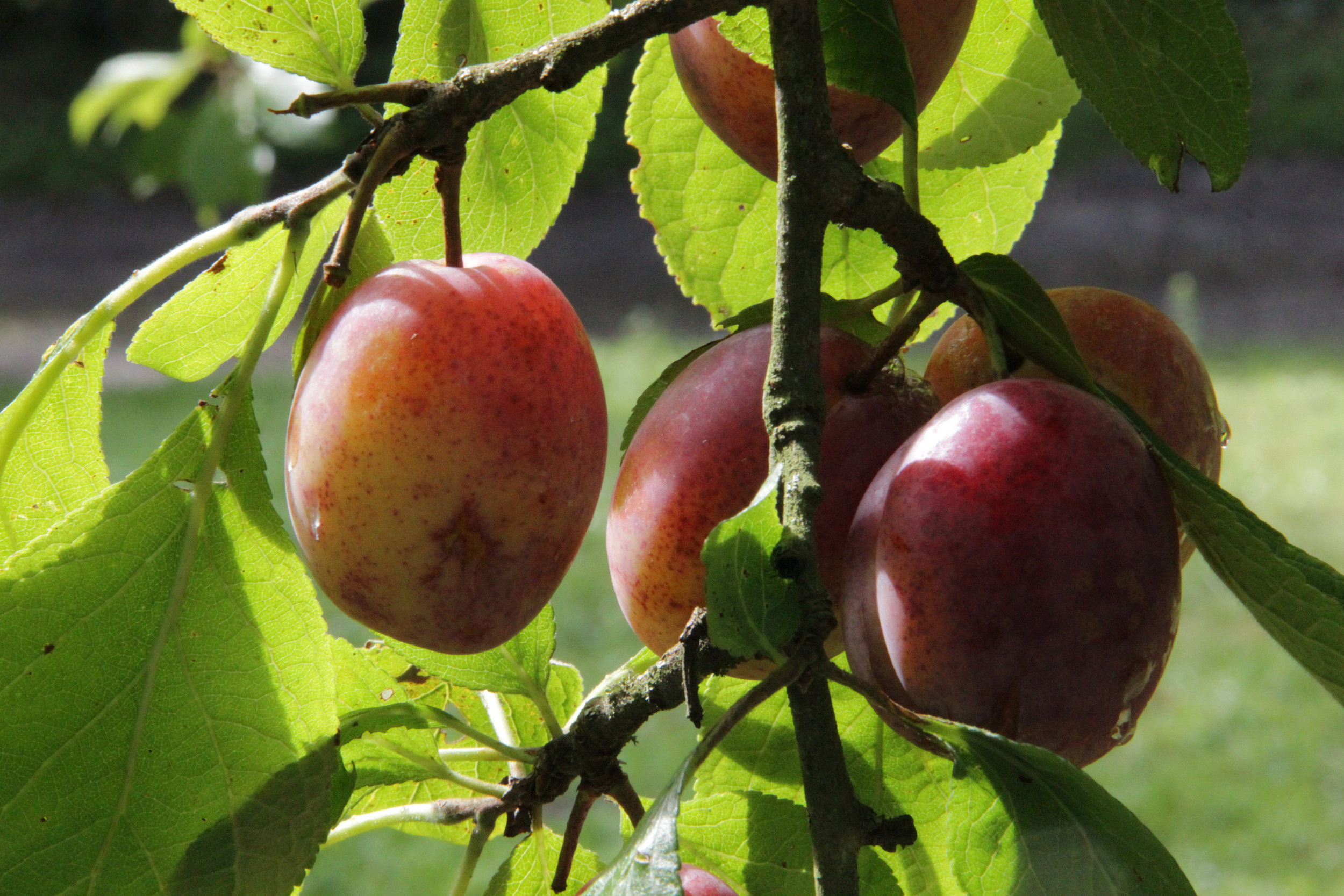Gravetye Kitchen Garden
 Mention the words kitchen garden and I am sure romantic visions dance across your mind. .You can watch peoples eyes light up and a smile appear; it is easy to conjure up romantic images of what one looks like, a place full of heavy bounty and the tasks that can take place there. Mornings with the garden covered in dew, birdsong serenading you while cutting flowers for a simple arrangement, sampling some freshly ripened strawberries that have fallen off the plant easily and into your hand, the strong scent of lavender lined paths...... Ahh, yes, it is true, those things do happen, but there is much more enjoyment to a kitchen garden than that! A kitchen garden is demanding, requires careful planning and hours of hard, laborious work which pays off and provides another layer of enjoyment that you will not get from any other garden. How many gardens do we actually get to eat what we grow? A kitchen garden utilizes all of your senses to the fullest, and it is the one part of the garden which rewards our hungry palettes. To eat what you have sown is such a true, yet extremely decadent experience, that brings constant pleasure. Push open the heavy iron gate and hearing it squeek closed behind you, you enter a whole new experience at Gravetye..
Mention the words kitchen garden and I am sure romantic visions dance across your mind. .You can watch peoples eyes light up and a smile appear; it is easy to conjure up romantic images of what one looks like, a place full of heavy bounty and the tasks that can take place there. Mornings with the garden covered in dew, birdsong serenading you while cutting flowers for a simple arrangement, sampling some freshly ripened strawberries that have fallen off the plant easily and into your hand, the strong scent of lavender lined paths...... Ahh, yes, it is true, those things do happen, but there is much more enjoyment to a kitchen garden than that! A kitchen garden is demanding, requires careful planning and hours of hard, laborious work which pays off and provides another layer of enjoyment that you will not get from any other garden. How many gardens do we actually get to eat what we grow? A kitchen garden utilizes all of your senses to the fullest, and it is the one part of the garden which rewards our hungry palettes. To eat what you have sown is such a true, yet extremely decadent experience, that brings constant pleasure. Push open the heavy iron gate and hearing it squeek closed behind you, you enter a whole new experience at Gravetye..
It was 1898 when William Robinson had the kitchen garden constructed on a hill just North of the Manor, using only local stone that was taken from a quarry located just a short distance away on the property.
Working with the rolling landscape common to West Sussex, the walls follow the slope of the hill and are immense, both in size and scale and it's said to be the only elliptical walled kitchen garden in all of England. Taking advantage of this topography, the kitchen garden slope provides sharp drainage and coupled with the high walls, it creates a fantastic micro climate which is ideal for growing crops. The high stone wall helps trap heat during the warmer months, protects from harsh winds, making it a less exposed site, and keeps out the ever hungry population of deer and rabbit.
Southwest facing and encompassing 2 acres, the kitchen garden is comprised of two large beds that are situated on either side of the main path while another bed forms an outer ring around, sitting just inside the protective wall. The beds are accessed by way of smaller paths that run off the center, upper and lower paths.
In these beds flowers, vegetables, herbs, small fruit, and fruit trees are grown, which all have key a key purpose. The vegetables, herbs, edible flowers and fruit all find their way into the Manor restaurant, where fresh seasonal ingredients are key to making each delicious dish. Guests marvel at the sight of where the ingredients for their food comes from, which in turn pleases the gardeners who see the end result of their hard work. The cut flowers on the other hand, if not edible, will be used to create stunning arrangements that are used throughout the hotel, in bedrooms, sitting rooms, and within the restaurant.
William Robinson once proclaimed that there should be at least 6-12' on either side of the garden path for planting beds. Staying true to his vision, these beds are a mix of herbs, annuals, perennials which cause a riot of color, full of activity of pollinators, against the soothing colors of the leafy greens planted beyond.
Great pleasure is taken in the order, neatness and precision of a carefully planned out kitchen garden. Each bed is sown or planted carefully in rows and is cropped as necessary, either harvested as needed, such as salad greens, or all at once such as potatoes. Green manure is sometimes planted in the beds and turned in to increase the fertility of the soil.

The upper half of the kitchen garden is noticeably a few degrees warmer than the rest of the garden, allowing us to take advantage and push the the types of crops we can grow there. Late winter sowing of early greens benefit up here due to the extra heat of the suns radiant heat not present in the other areas of the kitchen garden .
It is not uncommon to see flowers planted right up against crops to add visual interest throughout the beds.
Due to the higher temperatures in this part of the garden we are able to grow things like kiwi, cropping heavily each year, and always providing an abundance of delicious yields. Guests always swoon over this fact, excitedly sharing how much they love this strange sweet diminutive fruit.
The walls are heavily laden with ripe colorful fruit at this time of year, most noticeable on the many apple espalier growing flush against the local stone. Groaning under its own weight with intense flashes of red, the color of the apples almost acting as a warning to please pick them before they get released and dropped onto the ground.
On the lower end of the kitchen garden the micro climate is a slightly cooler environment. This is where crops that benefit from these cooler temperatures such as broccoli, cabbage, brussel sprouts, and spinach are planted.
Origanum vulgare and Lavender line the paths here, grown alongside the Tagetes patula 'Cinnabar', which is used for both a cutting plant and it's edible flowers.
The chickens and rooster take up residence in their roost and besides providing entertainment they create manure high in nitrogen causing plants grown in this soil to be healthier with bigger and better yields.
The kitchen garden is usually a favorite among the guests here, acting as the sweet crown sitting atop the gardens at Gravetye that William Robinson created. It is easy to see why, understandably so, since there is so much pleasure to take in here appealing to and benefiting all of the senses without an ounce of effort..... How sweet is that? Sweet indeed...



